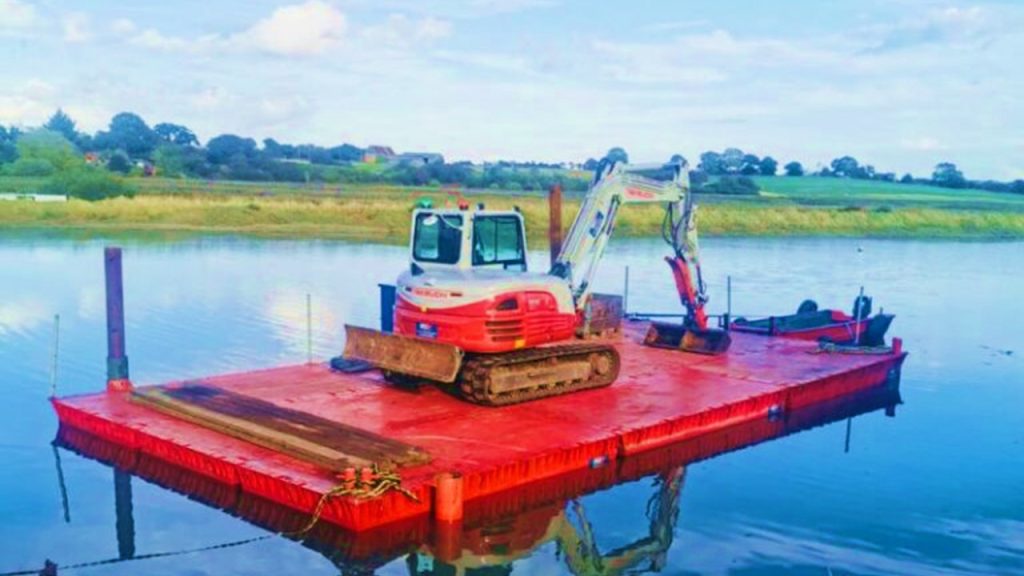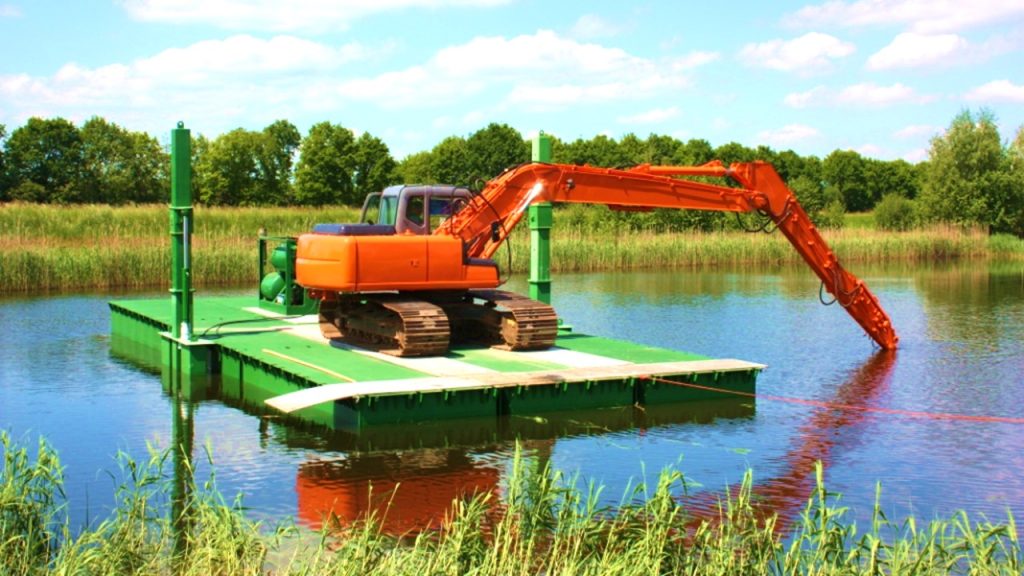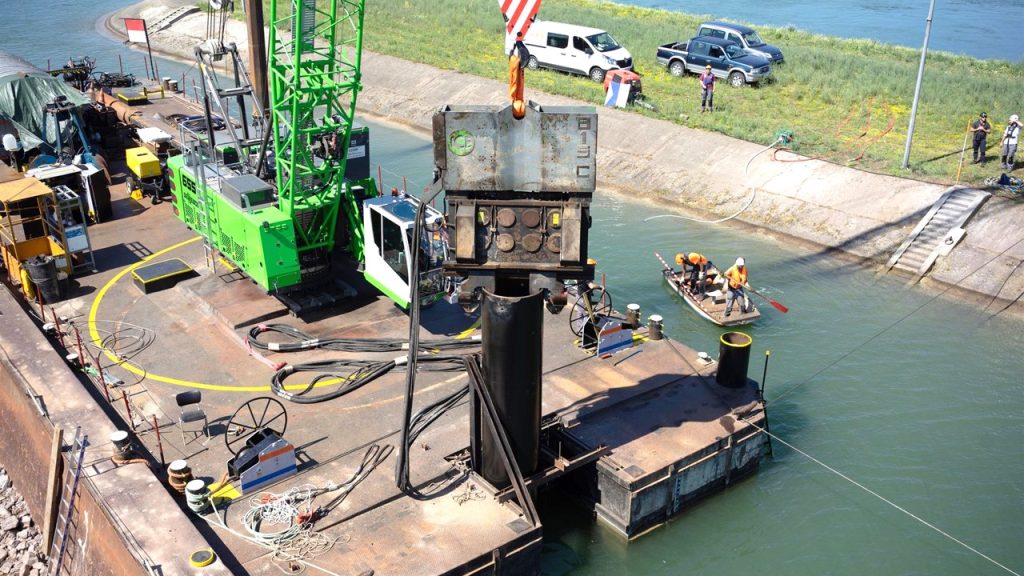Steel pontoons are an essential component in marine construction in the Philippines, serving as the foundation for various structures such as docks, piers, and floating bridges. These sturdy and versatile platforms provide stability and support in water environments, enabling the safe and efficient operation of marine activities. With their robust construction and durability, steel flatbed pontoons have become a popular choice among engineers and contractors involved in coastal development projects.
This article delves into the intricacies of steel pontoons for marine construction, highlighting their features, benefits, and applications in different types of projects. Whether it is for commercial or recreational purposes, understanding the capabilities offered by steel pontoons can greatly enhance the success of any marine construction endeavor.
The Need for Steel Pontoons
Pontoon boats play a crucial role in marine construction projects in the Philippines. Due to the country’s vast coastline and numerous islands, there is a significant need for sturdy and reliable structures that can withstand the harsh marine environment. Steel pontoons offer the perfect solution as they are durable, corrosion-resistant, and capable of withstanding strong currents and waves.
One of the key advantages of using steel pontoons is their ability to support heavy loads. In marine construction projects such as docks, wharves, and jetties, these structures are subjected to constant weight from vessels, machinery, and cargo. Pontoon boats have high load-bearing capacities that make them ideal for such applications. Additionally, their modular design allows for easy expansion or reconfiguration to accommodate changing needs or future expansions.
Furthermore, steel pontoons provide excellent stability in water due to their inherent buoyancy and strength. The Philippines experiences typhoons frequently throughout the year, which can generate strong winds and rough seas. Pontoon boats offer stability even during adverse weather conditions, providing a safe platform for workers and equipment involved in marine construction projects. Their robustness ensures that they can endure extreme forces without compromising safety or structural integrity.
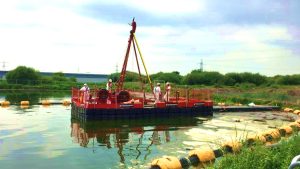
Advantages of Steel Pontoons:
One advantage of using metal pontoons for marine construction in the Philippines is their durability. Steel is known for its strength and ability to withstand harsh weather conditions, making it an ideal material for pontoons that will be exposed to saltwater, waves, and strong winds. This durability ensures a longer lifespan for the pontoons, reducing the need for frequent repairs or replacements.
Another advantage of metal pontoons is their versatility. Steel can be easily shaped and customized to meet specific design requirements, allowing for flexibility in constructing different types of marine structures, such as docks, piers, and floating houses. Additionally, steel pontoons can be easily transported and assembled on-site due to their lightweight nature compared to other materials like concrete or wood.
Overall, the advantages of using metal pontoons in marine construction in the Philippines include their durability against harsh weather conditions and versatility in design options. These factors make steel a cost-effective choice that promises long-lasting and reliable marine structures.
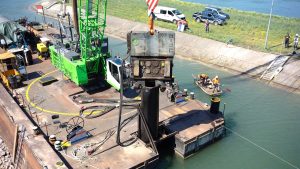
Durability and Longevity
When it comes to marine construction in the Philippines, durability and longevity are crucial factors that need to be considered. Steel boat pontoons are an excellent choice for such projects due to their inherent properties. The high tensile strength of steel makes it resistant to harsh environmental conditions in marine environments, including corrosion from saltwater. This ensures that the pontoons can withstand the test of time and remain structurally sound for years to come.
Additionally, steel pontoons have a long lifespan compared to other materials commonly used in marine construction. With proper maintenance and regular inspections, these structures can last for several decades. This longevity is especially important in the Philippines, where typhoons and other natural disasters are common occurrences. Steel’s resistance to extreme weather conditions makes it an ideal material for marine construction projects in this region.
Overall, durability and longevity are key considerations when choosing materials for marine construction projects in the Philippines. Steel pontoons offer both of these qualities due to their high tensile strength and resistance against corrosion and extreme weather conditions. By using metal pontoons, builders can ensure that their structures will endure over time, providing a safe and reliable solution for various marine applications throughout the country.
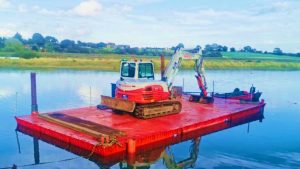
Versatility in Design and Configuration
In the realm of marine construction in the Philippines, versatility in design and configuration is crucial when it comes to steel pontoons. These floating structures are used for a variety of purposes, from creating temporary work platforms to serving as permanent foundations for offshore structures. The ability to customize their design and configuration allows them to adapt to different project requirements and environmental conditions.
One aspect of versatility in design is the ability to adjust the size and shape of metal pontoons. This allows them to be tailored to specific project needs, whether it’s accommodating heavy equipment or providing ample space for workers. Additionally, the configuration of these pontoons can be modified based on factors such as water depth, wave conditions, and soil conditions at the construction site.
Furthermore, versatility in design extends beyond just physical adjustments. Steel pontoons can be designed with additional features like integrated mooring systems or fendering systems that provide extra stability and protection against external forces. They can also incorporate modular components that allow for easy assembly and disassembly, making them highly adaptable for various projects.
Overall, versatility in design and configuration plays a vital role in ensuring the success of marine construction projects in the Philippines. By offering customized solutions that meet specific requirements while considering different environmental factors, steel boat pontoons prove their effectiveness as versatile assets in this field.

Excellent Load-Bearing Capacity
One of the main reasons why steel pontoons are preferred for marine construction in the Philippines is their excellent load-bearing capacity. These structures are designed to withstand heavy loads and provide stability even in harsh marine environments. The use of high-quality steel alloys ensures that the pontoons can support large structures such as bridges, piers, and offshore platforms.
Steel pontoons have been extensively used in various marine projects across the Philippines due to their ability to distribute weight evenly and resist deformation. Their robust construction allows them to bear heavy loads without compromising structural integrity or safety. This makes them ideal for supporting infrastructure projects that require a strong foundation capable of withstanding frequent movements caused by waves, currents, and tides.
Furthermore, steel pontoons offer long-term durability, making them a cost-effective choice for marine construction projects in the Philippines. With proper maintenance and regular inspections, these structures can last for decades without significant deterioration or loss of load-bearing capacity. This not only ensures safe operations but also minimizes repair and replacement costs over time. Overall, the excellent load-bearing capacity of metal pontoons makes them a reliable choice for supporting various types of marine infrastructure in the Philippines.
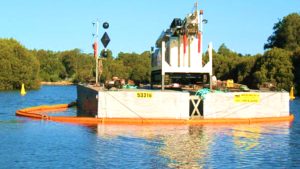
Applications of Steel Pontoons:
In the Philippines, steel pontoons have found various applications in marine construction.
Offshore Oil and Gas Exploration
One of the key components of offshore oil and gas exploration is the construction of steel pontoons for marine operations. These pontoons serve as floating platforms that support various activities such as drilling, production, and storage of oil and gas. In the Philippines, there has been a growing demand for steel flat-deck pontoon boats due to the country’s rich offshore resources.
The construction of steel pontoons requires meticulous planning and engineering expertise. They need to be specifically designed to withstand harsh marine environments, including strong waves, currents, and corrosive saltwater. In the Philippines, local companies have been actively involved in manufacturing these steel structures to cater to both domestic and international clients.
Apart from their primary function as floating platforms, metal pontoons also play a vital role in supporting other marine construction activities in the Philippines. These include building offshore pipelines, installing subsea infrastructure such as wellheads and risers, and facilitating maintenance and repair works on existing oil rigs or production facilities. With ongoing advancements in technology and increasing demand for energy resources globally, it is expected that the need for steel pontoons will continue to rise in offshore oil and gas exploration projects worldwide.
Bridge Construction and Rehabilitation
In the Philippines, steel flat-deck pontoon boats are widely used for marine construction projects, especially bridge construction and rehabilitation. These steel structures serve as temporary platforms or support systems during various stages of the project. They are designed to withstand heavy loads and provide stability in challenging marine environments.
Steel pontoons offer several advantages for bridge construction and rehabilitation in the Philippines. First, they provide a safe working platform for workers to carry out their tasks efficiently and securely. Second, they can be easily transported to different locations, making them highly versatile for various marine projects across the country. Last but not least, these steel structures have a long lifespan and require minimal maintenance, ensuring cost-effectiveness over time.
Steel pontoons play a crucial role in bridge construction and rehabilitation projects in the Philippines. Their durability, versatility, and ease of use make them an ideal choice for marine construction projects requiring temporary platforms or support systems. With ongoing infrastructure development across the country, it is expected that metal pontoons will continue to contribute significantly to efficient bridge construction and rehabilitation efforts in the future.
Marinas and Dock Systems
Steel pontoons are an essential component of marinas and dock systems in the Philippines. These sturdy structures provide a stable platform for boats and vessels to dock, ensuring safety for both the watercraft and their passengers. With the archipelagic nature of the Philippines, having reliable steel flat-deck pontoon boats is crucial for accommodating the numerous islands’ maritime activities.
One advantage of using steel pontoons for marine construction is their durability. Steel is known for its strength and resistance to corrosion, making it an ideal material choice for withstanding harsh marine conditions such as saltwater exposure. Additionally, metal pontoons are easy to maintain and require minimal repairs compared to other materials like wood or concrete.
Furthermore, steel pontoons offer flexibility in design and configuration, allowing them to be customized according to specific requirements. Whether it’s a small private marina or a large commercial dock system, steel pontoons can be designed to accommodate different sizes of boats and provide various amenities like berths, mooring facilities, and access walkways. This adaptability ensures that marinas and dock systems can cater to different types of vessels while efficiently maximizing space utilization.
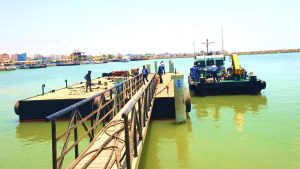
Considerations for Using Steel Pontoons:
When considering the use of steel pontoons for marine construction in the Philippines, there are several important factors to take into consideration. First and foremost is the durability and strength of the steel pontoons. The Philippines experiences a high level of typhoon activity, so it is crucial that any pontoons used in construction can withstand strong winds and heavy waves.
Another consideration is the corrosion resistance of the steel. The saltwater environment can be highly corrosive, so it is essential to choose a type of steel that has good resistance to corrosion. Additionally, proper maintenance and protective coatings should be applied regularly to ensure the longevity of the pontoons.
Finally, cost-effectiveness plays a significant role in choosing metal pontoons for marine construction. While they may initially have a higher upfront cost compared to other materials, such as concrete or timber, their long-term durability and low maintenance requirements can make them a cost-effective choice over time.
When deciding whether to use steel pontoons for marine construction in the Philippines, one must consider factors such as durability against typhoons, corrosion resistance in saltwater environments, and overall cost-effectiveness. By carefully evaluating these considerations, builders can make informed decisions that will result in successful and long-lasting marine structures.
Maintenance and Inspection Requirements
Maintenance and inspection requirements for steel pontoons used in marine construction projects in the Philippines are crucial to ensure their longevity and safe operation. Regular maintenance is essential to prevent deterioration caused by exposure to harsh marine environments, such as corrosion. It involves cleaning, painting, and lubricating the pontoons regularly to protect them from rust and other forms of damage.
Inspection requirements for metal pontoons include routine checks by qualified personnel to identify any signs of wear and tear or structural defects. These inspections should be carried out at regular intervals, especially after severe weather events or significant changes in water levels. In addition to visual inspections, non-destructive testing techniques like ultrasonic thickness gauging may be employed to assess the integrity of the pontoons’ metal structure.
Adhering to proper maintenance and inspection protocols helps ensure that steel flat-deck pontoon boats remain structurally sound, reducing the risk of accidents or failures during marine construction activities. By conducting regular maintenance and inspections, potential issues can be identified early on, allowing for timely repairs or replacements before they escalate into more extensive problems that could disrupt project timelines or compromise safety.
Are You Looking for a Steel Pontoon Manufacturer in the Philippines?
Are you in search of a reliable steel pontoon manufacturer in the Philippines? Look no further than Amaya Dockyard & Marine Services Inc. With their expertise and dedication to producing high-quality metal pontoons, our sister company is the go-to company for all your marine construction needs.
- Email us: info@fullspeedchartering.com
- Call our 24-hour hotline: +63 939 375 3224
- Viber: +63 939 375 3224
- WhatsApp: +63 939 375 3224
- Facebook Messenger: Click here
- Click here to inquire
Amaya Dockyard & Marine Services Inc. has established itself as a leading shipbuilding and ship repair in the Philippines, known for its exceptional craftsmanship and attention to detail. Their steel pontoon boats are built to withstand even the harshest environmental conditions, ensuring durability and longevity. Whether you need pontoons for floating docks, marinas, or other marine structures, Amaya Dockyard & Marine Services Inc. can tailor their products to meet your specific requirements.
What sets Amaya Dockyard & Marine Services Inc. apart from other manufacturers is its commitment to quality control throughout the manufacturing process. From the moment raw materials are sourced, Amaya Dockyard & Marine Services Inc. implement rigorous quality control measures to ensure that only the highest-grade components are used in their pontoons. Each step of the manufacturing process is meticulously supervised by a team of experienced professionals who adhere to strict quality standards.
State-of-the-art machinery and cutting-edge technology are employed to fabricate every steel pontoon with precision and accuracy. The skilled craftsmen at Amaya Dockyard & Marine Services Inc. take pride in their workmanship, paying attention to every detail to ensure the final product meets or exceeds industry standards. Each steel pontoon is carefully inspected for any defects or imperfections before it moves on to the next stage of production.
In addition to physical inspections, Amaya Dockyard & Marine Services Inc. also conducts rigorous testing procedures on their pontoons. These tests include various load and stress simulations, as well as water-tightness assessments.
Conclusion: The Future of Steel Pontoons
In conclusion, the future of steel pontoons for marine construction in the Philippines looks promising. As an archipelago nation with a growing economy and infrastructure development, there is an increasing demand for sturdy and reliable structures to support various projects such as ports, bridges, and offshore platforms.
Steel pontoons offer several advantages that make them a viable choice for marine construction in the country. Firstly, steel has excellent strength and durability properties, making it capable of withstanding harsh weather conditions and heavy loads. This ensures long-term stability and safety for any marine structure built using steel pontoons.
Additionally, steel is a versatile material that can be easily fabricated into different shapes and sizes to meet specific project requirements. Whether it’s a small jetty or a large-scale port facility, metal pontoons can be customized to fit the desired design and functionality.
Moreover, compared to other materials like concrete or wood, steel pontoons require less maintenance over their lifespan. They are resistant to corrosion and are not prone to rotting or warping due to constant exposure to water.
Overall, considering their durability, versatility, and low maintenance requirements, it is highly likely that steel pontoon boats will continue to play a significant role in marine construction projects across the Philippines in the coming years.

